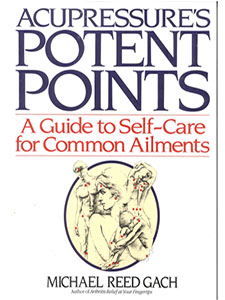CHINESE ACUPUNCTURE AND MOXIBUSTION (4TH EDITION)
By Cheng Xin-Nong
$95.00
In Stock
Description
ISBN: 9787119111582
Preface to the Revised Edition (1999) Preface (1987) Chapter I A Brief History of Chinese Acupuncture and Moxibustion I.THE ORIGIN OF ACUPUNCTURE AND MOXIBUSTION II.THE ACADEMIC ACCOMPLISHIMENTS OF ANCIENT ACUPUNCTURE AND MOXIBUSTION III.MODERN DECLINE AND NEW LIFE OF ACUPUNCTURE AND MOXIBUSTION IV.REJUVENATION OF ACUPUNCTURE AND MOXIBUSTION IN NEW CHINA V.THE DISSEMINATION OF ACUPUNCTURE AND MOXIBUSTION TO THE WORLD Chapter 2 Yin and Yang, and the Five Elements I.YIN AND YANG 1.Basic Knowledge of the Theory of Yin and Yang 2.Application of the Theory of Yin and Yang in Traditional Chinese Medicine II.THE FIVE ELEMENTS 1.Classification of Phenomena According to the Five Elements 2.Law of Movement of the Five Elements 3.Application of the Theory of the Five Elements in Traditional Chinese Medicine Chapter 3 The Zang-Fu Organs 1.Ancient anatomical knowledge. 2.Observation of physiological and pathological phenomena. 3.The summary of rich exprience obtained through lengthy clinical practice. I.THE FIVE ZANG ORGANS 1.The Heart 2.The Liver 3.The Spleen 4.The Lung 5.The Kidney II.THE SIX FU ORGANS 1.The Gallbladder 2.The Stomach 3.The Small Intestine 4.The Large Intestine 5.The Bladder 6.The Triple Energizer III.THE EXTRA FU ORGANS 1.The Brain 2.The Uterus IV.THE RELATIONSHIPS AMONG THE ZANG-FU ORGANS 1.The Relationships among the Zang Organs 2.The Relationship between the Zang and the Fu Organst1 AIOM 3.The Relationships among the Fu Organs Chapter 4 Qi, Blood and Body Fluid I.QI 1.Classification and Production of Qi 2.Functions of Qi II.BLOOD 1.Formation and Circulation of Blood 2.Functions of Blood III.BODY FLUID 1.Formation and Distribution of Body Fluid 2.Functions of Body Fluid (Jin ye) IV.THE RELATIONSHIP BETWEEN QI, BLOOD AND BODY FLUID 1.The Relationship between Qi and Blood …… Chapter 5 The Meridians and Collaterals Chapter 6 An Introduction to Acupuncture Points Chapter 7 Acupuncture Points Chapter 8 Aetiology and Pathogenesis Chapter 9 Diagnostic Methods Chapter 10 Differentiation of Syndromes Chapter 11 Acupuncture and Mobustion Techniques Chapter 12 A General Introduction to Acupuncture Treatment Chapter 13 Internal Diseases Chapter 14 Gynecological Diseases Chapter 15 Pediatric Diseases Chapter 16 External Diseases Chapter 17 Diseases of Eyes, Ears, Nose and Throat Chapter 18 Beauty-Damaging Diseases Bibliography Standard Nomenclature of the Acupuncture Points of the Fourteen Meridians Index
 Monday-Friday 8:30 am to 4:30 pm
Monday-Friday 8:30 am to 4:30 pm
 THE CANADIAN AGENT FOR
THE CANADIAN AGENT FOR 



